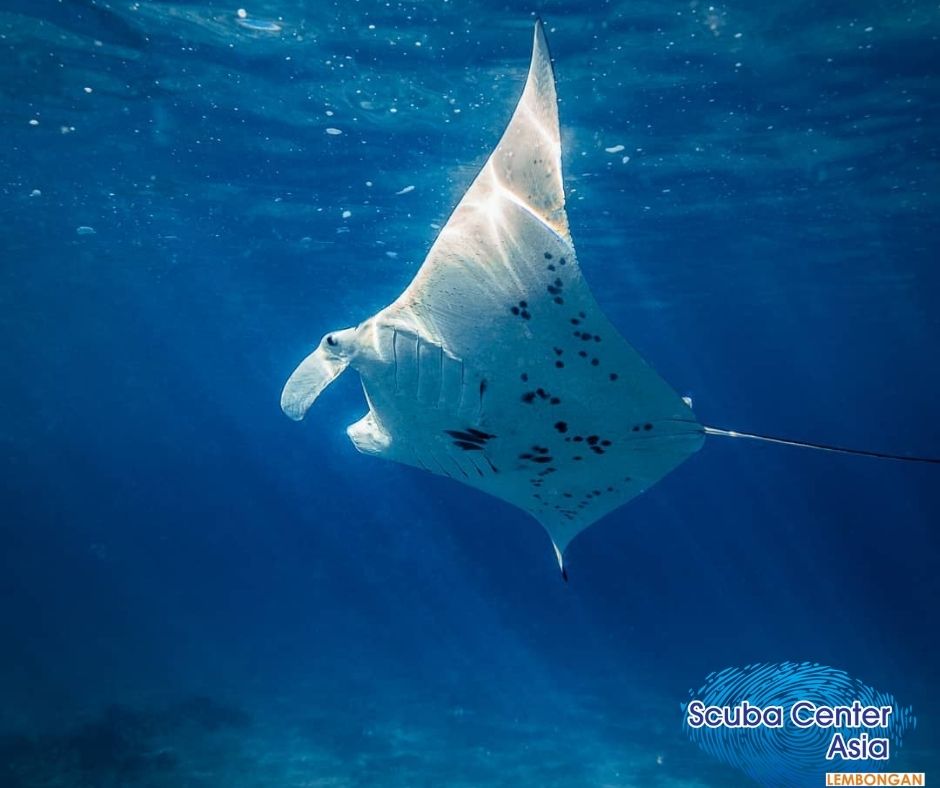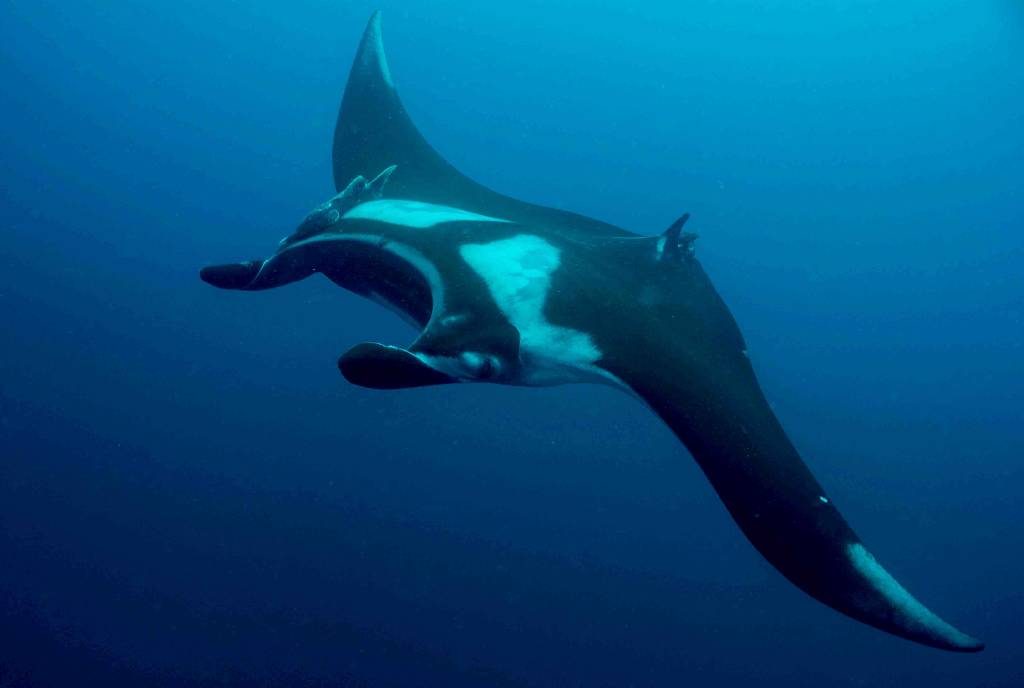If there are creatures in the Ocean that can be considered majestic and enigmatic, it is manta rays. In the past, very little was known about these creatures, but recently, discoveries have brought to light the fact that there are 2 distinct species.
There are reef mantas, scientifically known as Manta Alfredi, and there are Oceanic or Giant Mantas, scientifically known as Manta Birostris. The smaller ones are the reef mantas and they have pectoral fins spanning some 5.5 meters. The larger oceanic mantas have pectoral fins spanning 7.5 meters.
Manta rays what they do
Manta rays are harmless and they can be spotted around Indonesia with ease. However, the most sighted rays are the reef mantas since they do not migrate. They tend to live in large populations in a particular area where they feed and clean. Nusa Penida is one such location.
Reef mantas feed on plankton and they use their cephalic fins to feed. These two fins are the ones spiraling down the front of its head. They make the manta very efficient when it comes to feeding because they tend to move independently. This helps the flow of plankton towards the mouth since they are moved to direct plankton to the mouth and maximize efficiency. If the particular feeding area has a lot of plankton, they tend to turn somersaults in order to stay in one place and still collect large amounts of plankton while only dispersing as little as possible.
Here, they can easily be located by the locals so that you can get to see one for yourself. Manta Point Nusa Penida is one of the best locations to dive and see manta rays feeding. You may also be lucky enough to see a mating train of mantas.
From time to time, giant rays pass through here too making Manta Point Nusa Penida one of the best places to dive in Bali…
Why Manta Rays Have Special Bellies: Decoding the Unique Patterns of Ocean Giants

Manta rays have this cool thing going on—they each have their own special belly patterns, kind of like how we have our unique fingerprints. These patterns are made up of dark spots and blotches, and they’re like a personal ID for each manta. Scientists use these patterns to learn about manta behavior, where they travel, and how many of them are out there. It’s pretty neat and reminds us why it’s important to keep our oceans safe for these awesome creatures.
Here at Lembongan, we are delighted to have the local research team Marine Mega Fauna Foundation living on the island! This means lots of VIP information we get on a monthly base. The best part every now and then you will meet the research team here with us at Scuba Center Asia as they join us for their research dives!
Manta Rays Facts
One experience that remains etched in your memory forever is the sighting of manta rays. If you visit Nusa Penida and do diving, you will definitely get to see one of these (unless you are the rare unlucky ones). They are enormous but when you see them swimming in the ocean, they tend to glide effortlessly and with a lot of grace.

Once you spot that first manta ray, you will want to schedule more dives in that particular area because you are hoping to see another one. These creatures are mesmerising and there’s a number of things that make them absolutely fascinating:
- Manta is a Spanish word that is translated literally to mean ‘blanket’. When you see them floating on the ocean’s surface, they tend to look like a big black blanket. This is how they got their name.
- Once a mama manta mates, it takes close to a year to give birth to the baby. When you see a baby manta, you will simply be looking at a smaller version of the adult.
- The ratio of brain to the body weight of a manta is the highest among sea animals. In fact, they are much more intelligent than bottlenose dolphins.
- Manta rays are very big but they eat zooplankton which are tiny creatures living in the water. These include segmented worms and prawns as well as other small crustaceans.
- Manta rays have spots located on their underbelly by which they can be individually identified just like the leopard shark. It is these spots that enable one to differentiate them from devil rays which are their cousins.
- These amazing creatures are native to subtropical and tropical waters, which is why they are found in Indonesia, New Zealand, and Australia. You may also find them in Maldives, Bahamas, Thailand, Fiji and Spain.
- Mantas are fish that enjoy the flight as well. From time to time, they have been known to leap clear out of the water. This is believed to have something to do with mating rituals or communication. Scientists are still trying to figure it out.
- In order to live, they need to constantly be in motion so water can pass over their gills.
- A full grown manta has an average wingspan seven meters and they can weigh as much as two tons.
- They have a layer of mucus that covers their skin for protection and touching them can remove it.
- They are enormous in size but completely harmless.
Manta rays can be found throughout the year in Nusa Penida but the best time to see manta ray in Nusa Penida is from April – May where the water conditions are the most calm. Scuba Center Asia is a dive Center in Lembongan that can guide you to see this beautiful gladiator. You can Find us here.


